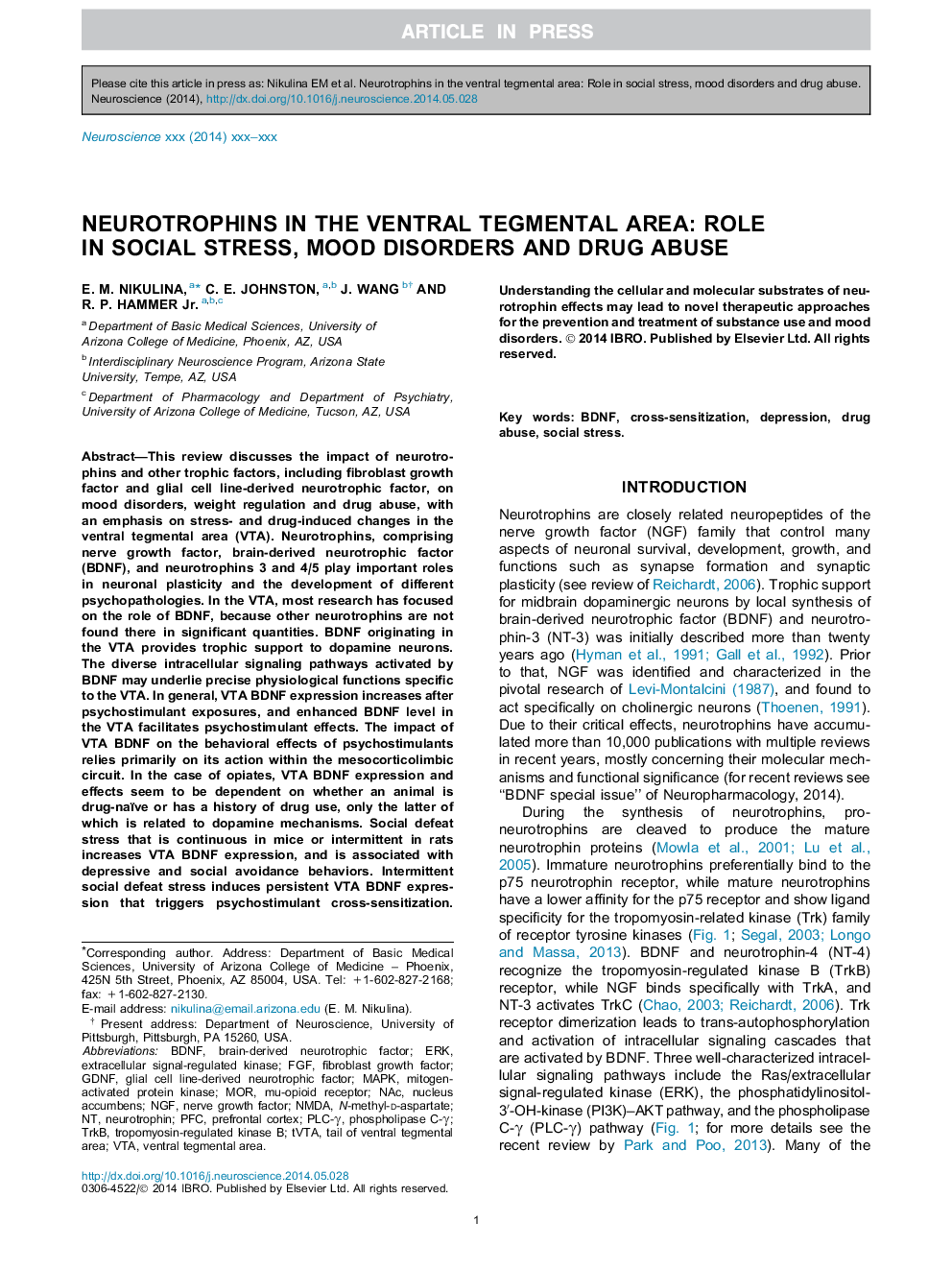| Article ID | Journal | Published Year | Pages | File Type |
|---|---|---|---|---|
| 6273283 | Neuroscience | 2014 | 17 Pages |
Abstract
This review discusses the impact of neurotrophins and other trophic factors, including fibroblast growth factor and glial cell line-derived neurotrophic factor, on mood disorders, weight regulation and drug abuse, with an emphasis on stress- and drug-induced changes in the ventral tegmental area (VTA). Neurotrophins, comprising nerve growth factor, brain-derived neurotrophic factor (BDNF), and neurotrophins 3 and 4/5 play important roles in neuronal plasticity and the development of different psychopathologies. In the VTA, most research has focused on the role of BDNF, because other neurotrophins are not found there in significant quantities. BDNF originating in the VTA provides trophic support to dopamine neurons. The diverse intracellular signaling pathways activated by BDNF may underlie precise physiological functions specific to the VTA. In general, VTA BDNF expression increases after psychostimulant exposures, and enhanced BDNF level in the VTA facilitates psychostimulant effects. The impact of VTA BDNF on the behavioral effects of psychostimulants relies primarily on its action within the mesocorticolimbic circuit. In the case of opiates, VTA BDNF expression and effects seem to be dependent on whether an animal is drug-naïve or has a history of drug use, only the latter of which is related to dopamine mechanisms. Social defeat stress that is continuous in mice or intermittent in rats increases VTA BDNF expression, and is associated with depressive and social avoidance behaviors. Intermittent social defeat stress induces persistent VTA BDNF expression that triggers psychostimulant cross-sensitization. Understanding the cellular and molecular substrates of neurotrophin effects may lead to novel therapeutic approaches for the prevention and treatment of substance use and mood disorders.
Keywords
MORPLC-γtVTATrkBVTAN-methyl-d-aspartateGDNFNMDANGFERKFGFPFCNACBDNFMAPKSocial stressDepressionDrug abuseCross-sensitizationnerve growth factorfibroblast growth factorGlial cell line-derived neurotrophic factorBrain-derived neurotrophic factorphospholipase C-γprefrontal cortexventral tegmental areaNeurotrophinNucleus accumbensmitogen-activated protein kinaseextracellular signal-regulated kinasemu-opioid receptor
Related Topics
Life Sciences
Neuroscience
Neuroscience (General)
Authors
E.M. Nikulina, C.E. Johnston, J. Wang, R.P. Jr.,
